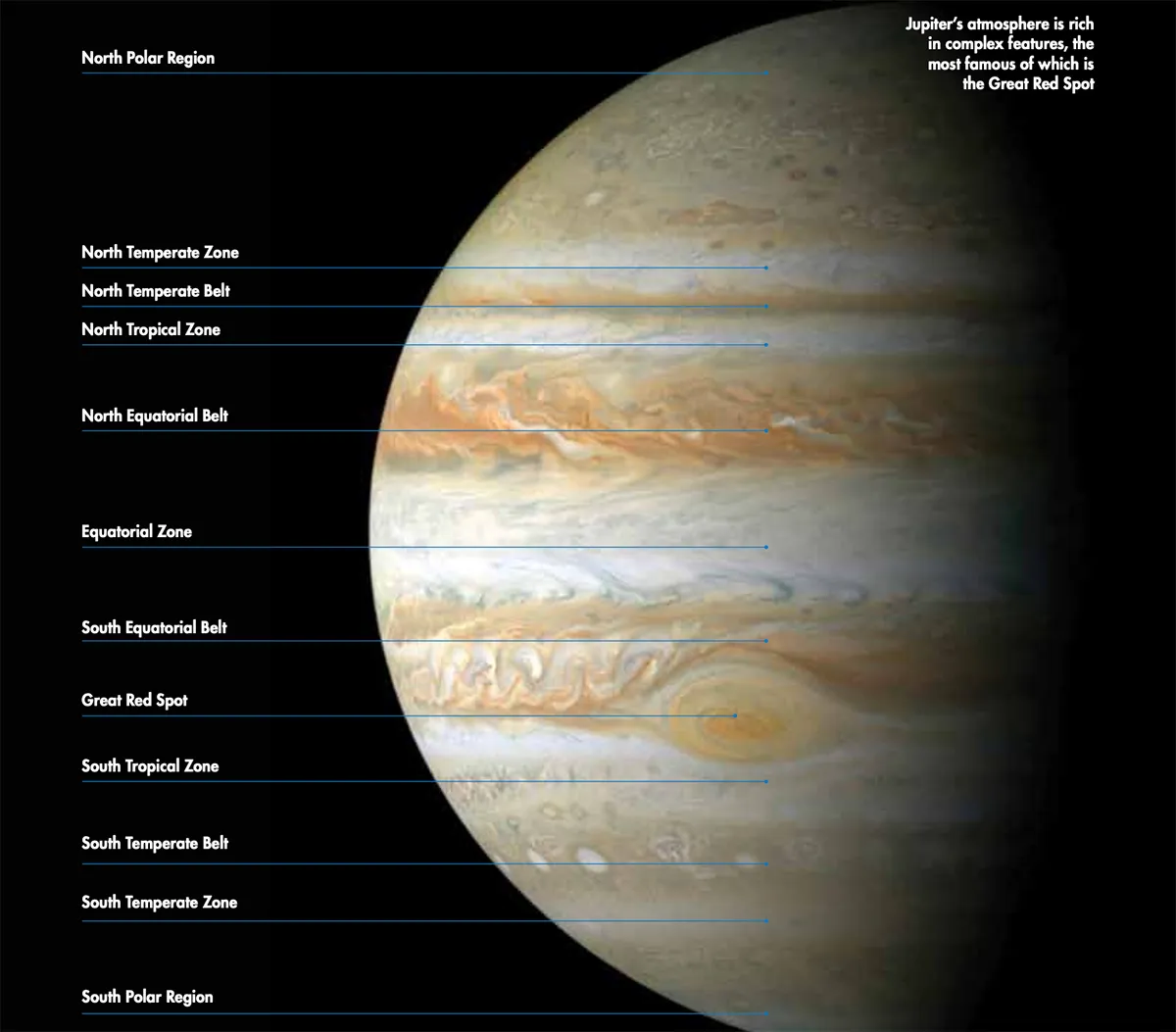Taking the time to observe Jupiter's belts and zones is a great way of exploring the planet's stormy atmosphere.
As many of us know from our own observations or from images captured by observatories like NASA's Juno spacecraft or the Hubble Space Telescope, Jupiter is a gas giant with a thick, detailed and banded atmosphere.
Studies using data from the Juno mission have attempted to discover what's going on beneath Jupiter's clouds.
Any textbook typically shows a diagram identifying which bands are which.
However, the view though the eyepiece doesn’t always match what you’d expect.
In this guide, we'll show you how to observe Jupiter’s belts and zones and pick out as many as you can.
For more advice, read our guide on how to observe Jupiter through a telescope and how to photograph Jupiter.

Identifying Jupiter's belts and zones
Why doesn’t Jupiter’s atmosphere always resemble how it’s depicted in books?
Well, being a dynamic entity, the visibility of the belts and zones can vary.
Turbulence can create conditions where they become indistinct from one another and sometimes disappear completely.
As a result, it’s best to use any diagram as a guide, first identifying the main features and then using these to navigate to the less obvious regions.

Jupiter's equatorial belts and zones
The best place to start is with the North and South Equatorial Belts (NEB and SEB).
These are wide, dark belts easily seen through a small telescope. They encircle Jupiter’s globe parallel to its equator.
Between them lies the lighter Equatorial Zone (EZ) often filled with swirling atmospheric detail.
At certain times this may show a thin, dark belt running midway between the NEB and SEB: the Equatorial Belt (EB).
Although at first glance the NEB and SEB look similar, the SEB is split in two by the SEB Zone (SEBZ), the north and south components identified as the SEB(N) and SEB(S).
The Great Red Spot (GRS) is embedded in the SEB(S) in a scalloped region called the Great Red Spot Hollow.
Jupiter's tropical zones

Near Jupiter's poles are the dark North and South Polar Regions (NPR and SPR) and it’s between a polar region and its nearest equatorial belt that the fun begins.
The belts and zones found here can be indistinct and somewhat confusing to identify.
North of Jupiter's North Equatorial Belt and south of the South Equatorial Belt are two tropical zones: North Tropical Zone (NTrZ) and South Tropical Zone (STrZ).
Then come the temperate belts (TB) and zones (TZ), prefixed by hemisphere identifiers.

For example, North Temperate Belt (NTB), North Temperate Zone (NTZ), North North Temperate Belt (NNTB), North North Temperate Zone (NNTZ), and so on.
The northern sequence ends with the North North North Temperate Belt and Zone, often labelled N3TB and N3TZ.
The southern hemisphere’s sequence ends with the SSTB and SSTZ.
See how many belts and zones you can identify, bearing in mind they may not be distinct and some may not be visible at all.
Have you managed to observe or photograph Jupiter's belts and zones? Let us know by emailing contactus@skyatnightmagazine.com

